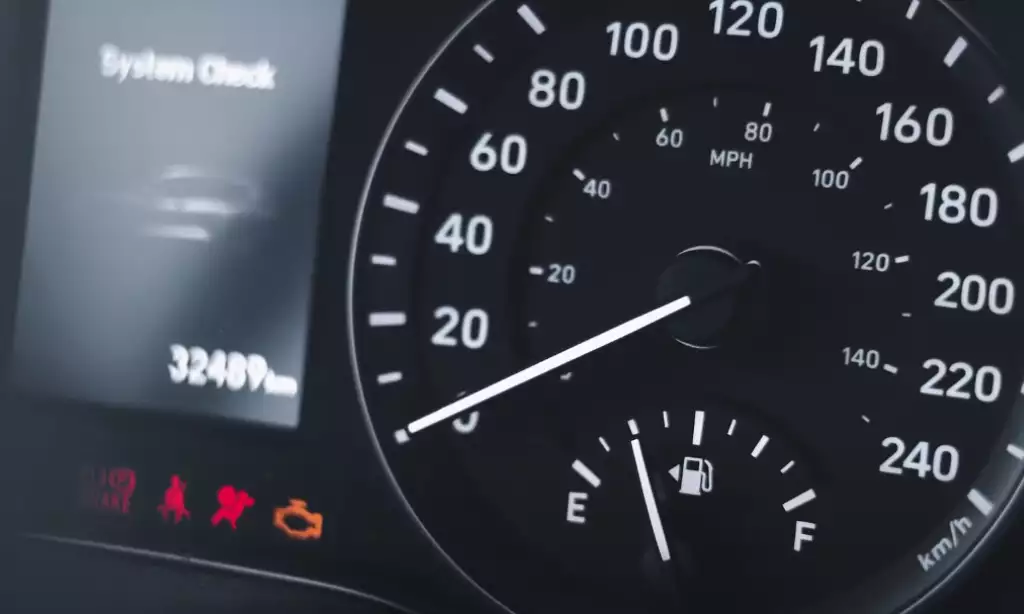Where Is the Chevy Transmission Control Module (All You Need to Know)
The transmission control module (TCM) plays a crucial role in the operation of a vehicle’s automatic transmission system. It is responsible for monitoring and controlling various aspects of the transmission, ensuring smooth gear shifts and optimal performance. If you’re experiencing transmission-related issues with your Chevy vehicle, understanding the location of the TCM and how to reset it can be valuable information.
In this article, we will explore the location of the Chevy transmission control module and provide insights on how to reset it. While the exact location may vary depending on the Chevy model and year, we will discuss common areas where the TCM is typically found in Chevy vehicles. Additionally, we will explain the reset process, which can help resolve certain transmission problems and restore proper functionality.
Whether you’re a Chevy owner troubleshooting transmission issues or simply curious about the TCM and its role, join us as we delve into the world of the Chevy transmission control module, its location, and the steps to perform a reset when necessary.
What Is a Transmission Control Module
A transmission control module (TCM), also known as a transmission control unit (TCU), is an essential component of a vehicle’s automatic transmission system. It is an electronic device responsible for managing and regulating the operation of the transmission, ensuring smooth gear shifting and optimal performance.
The TCM receives input signals from various sensors throughout the vehicle, such as the throttle position sensor, vehicle speed sensor, and engine control module (ECM). Based on these inputs, as well as programmed algorithms and parameters, the TCM makes decisions regarding the appropriate gear selection, shift timing, and torque converter lockup.
The primary functions of a TCM include:
1. Gear Shifting
The TCM determines when to shift gears based on engine speed, vehicle speed, throttle position, and other factors. It controls the engagement and disengagement of clutches and bands within the transmission to achieve smooth gear changes.
2. Torque Converter Lockup
The TCM manages the engagement of the torque converter lockup clutch, which improves fuel efficiency and reduces transmission heat generation by eliminating slippage between the engine and the transmission.
3. Diagnostic and Fault Monitoring
The TCM constantly monitors the transmission system for any faults or abnormalities. It can store trouble codes, illuminate the “Check Engine” light, and provide valuable diagnostic information to help identify and address transmission-related issues.
4. Adaptation and Learning
Modern TCMs have adaptive features that allow them to learn and adjust the transmission’s behavior over time. They can adapt to individual driving styles, environmental conditions, and wear characteristics to optimize performance and extend the life of the transmission.

Signs and Symptoms of a Bad Transmission Control Module
A faulty transmission control module (TCM) can cause various issues with your vehicle’s transmission system. Recognizing the signs and symptoms of a bad TCM can help you identify and address problems before they worsen. Here are some common indicators of a malfunctioning TCM:
1. Erratic Shifting
One of the most noticeable signs of a bad TCM is erratic shifting behavior. You may experience abrupt or delayed gear shifts, inconsistent engagement or disengagement of gears, or difficulty getting the transmission into the correct gear. This can result in jerky movements or a lack of power during acceleration.

2. Stuck in a Single Gear
A malfunctioning TCM can cause your vehicle to become stuck in a single gear, typically known as “limp mode” or “fail-safe” mode. This is a safety feature that allows you to drive your vehicle at a limited speed to prevent further damage. You may notice that the transmission remains in a higher gear, such as third or fourth, regardless of the vehicle’s speed.
3. Failure to Shift
In some cases, a faulty TCM may prevent the transmission from shifting altogether. Your vehicle may remain in a single gear, typically first or second, and fail to upshift or downshift as necessary. This can result in poor acceleration, reduced power, and higher engine RPM at highway speeds.
4. Harsh or Slipping Shifts
A bad TCM can cause harsh or delayed shifts, where you feel a jolt or impact during gear changes. Conversely, you may also experience slipping shifts, where the transmission temporarily loses power or fails to engage properly, resulting in a loss of acceleration.
5. Transmission Overheating
A malfunctioning TCM may lead to excessive heat buildup within the transmission. Overheating can cause damage to internal components and fluid degradation, leading to further transmission problems. If you notice the transmission temperature warning light illuminated or detect a burning smell, it could be a sign of TCM-related issues.
6. Illuminated Warning Lights
A problematic TCM can trigger the illumination of warning lights on the instrument cluster. The “Check Engine” light or a specific transmission-related warning light may come on, indicating a fault within the transmission system.

How to Identify the Chevy TCM?
Identifying the location of the Transmission Control Module (TCM) in a Chevy vehicle can vary depending on the model and year. However, there are a few common areas where you can typically find the TCM. Here’s how you can identify the TCM in a Chevy:
1. Consult the Owner’s Manual
The first step is to refer to the owner’s manual of your Chevy vehicle. It often provides information on the location of important components, including the TCM. Look for the section that covers the transmission system or the electrical components to find details specific to your model.
2. Engine Compartment
In many Chevy vehicles, the TCM is located in the engine compartment. Begin by opening the hood and visually inspecting the area. Look for a black or silver box with wiring harnesses connected to it. The TCM is often mounted on the firewall, near the engine control module (ECM) or fuse box.
3. Underneath the Dashboard
In some Chevy models, the TCM may be located underneath the dashboard on the driver’s side. To access it, you may need to remove some panels or covers. Look for a rectangular module with multiple electrical connectors plugged into it.
4. Transmission Housing
In a few Chevy vehicles, particularly those with rear-wheel drive or all-wheel drive, the TCM may be integrated into the transmission housing itself. In this case, it is not easily accessible or serviceable without removing the transmission or other components.
5. Online Resources and Forums
If you’re unable to locate the TCM using the above methods, you can search for specific information online. Chevy owner forums, dedicated automotive websites, or Chevy-specific websites may have discussions or tutorials that provide guidance on finding the TCM in your particular model.
Frequently Asked Questions
Q: Where is the transmission control module (TCM) located in a Chevy vehicle?
A: The location of the transmission control module can vary depending on the specific Chevy model and year. However, there are a few common areas where you can typically find the TCM. It is often located in the engine compartment, mounted on the firewall or near the engine control module (ECM). In some models, it may be situated underneath the dashboard on the driver’s side. It’s important to consult the owner’s manual or seek professional assistance for accurate information on the TCM location in your particular Chevy vehicle.
Q: How can I find the TCM in my Chevy vehicle?
A: To identify the TCM in your Chevy, start by referring to the owner’s manual. It often provides guidance on the location of key components. You can also visually inspect the engine compartment for a black or silver box with wiring harnesses connected to it. Look for the TCM mounted on the firewall. If you don’t find it there, check underneath the dashboard on the driver’s side. Remember, the TCM’s exact location can vary, so consulting professional resources or seeking assistance from a mechanic is recommended for precise information.
Q: Can I access and service the TCM on my own?
A: Accessing and servicing the TCM may require technical knowledge and specific tools. While some Chevy models may have easily accessible TCMs, others may require removing panels or components for access. It is generally advisable to consult a professional mechanic or automotive technician for TCM-related tasks to ensure proper handling and avoid unintended damage.
Q: Why would I need to locate the TCM in my Chevy vehicle?
A: Identifying the TCM becomes necessary when troubleshooting transmission-related issues or performing maintenance tasks. If you are experiencing transmission problems or need to perform diagnostics or repairs on the transmission system, knowing the TCM’s location helps in accessing and working with the module effectively.
Q: Can I rely on online resources for TCM location information?
A: Online resources, including Chevy owner forums, automotive websites, and manufacturer-specific websites, can provide insights and guidance on locating the TCM. However, due to variations in models and years, it’s important to cross-reference information and consider it as a general starting point. For accurate and precise information, consulting the owner’s manual or reaching out to a professional mechanic or Chevy dealership is recommended.
- Why Are My Car Headlights Not Bright Enough? - May 9, 2024
- How Long Can You Drive With An EVAP Leak? - May 9, 2024
- What Does B Stand for in a Car? [Full Guide] - May 9, 2024





![What’s a Mustang GT’s Top Speed? [2024]](https://automhelp.com/wp-content/uploads/2023/12/Ford-Mustang-GT-5.0-ACCELERATION-TOP-SPEED-POV-Autobahn-Test-Drive-by-AutoTopNL_000071567-768x432.webp)

